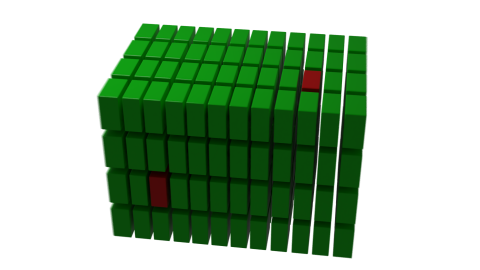Redis 05 - NoSQL Origins, goals and challenges
This part will describe some general concepts and challenges in NoSQL : Scalability, High-Availability, Consistency and Performances. It is needed to make the next parts easier to understand.
You can find links to the related video recordings and printable materials at the end of this post.
Video
NoSQL origins
Relational databases were designed in the 70s, when resources were expensive. It was designed to deduplicate the data, by normalizing it, and save resources. Networking was slow, clustering even did not appear in Stanley Kubrick’s “2001 A space odyssey” movie. It was designed to be generic and to fit all the usecases, at the price of normalization. It was designed with slow development cycles where the data schema was not changing too much and was enforced in the database, by the database.

SQL was created to query this storage with an excellent flexibility. But joins are costly and need indexes to improve performances. They are not very scalable horizontaly by design, making scalability of relational databases a real pain, this was not the main goal at this time.
These limitations were fine until companies such as Google, Facebook or LinkedIn hit them with their dataset size and their specific needs. Fortunately, they also had the human resources to implement a specific datastorage and a query language to fit their need.
Lets take an exemple with a columnar database, when we store customers in a database. If the need is a transactional need such as an ERP, the smaller needed information is a whole customer record and storing this customer record as such in a relational database is fine.

But if the need is analytical such as “what is the number of children of my French customers”, we only need to access 2 fields of each customer, “nb children” and “country”. A record oriented storage is not efficient because we need to fetch a whole record, get only 2 fields from it and repeat this process. On the other hand, a columnar storage is better because the granularity of the storage is the field, thus we have to scan 2 columns.

Basically, instead of fetching a lot of information from the storage and filtering them afterward, we filter before and fetch only the required information from the storage. Of course, it would not be efficient if we had to rebuild customer records, this is not a storage for a generic approach but a specific storage optimized for a specific need.
You might not have the same dataset size, but you might have the same specific usecase, and you can leverage these NoSQL databases.
NoSQL goals and challenges
NoSQL databases were designed from the very begining to be scalable using horizontal scalability on commodity hardware. But the more hardware we use, the higher failure probabilities are, coming with availability challenges.

- High-availability has to be included in the design to mitigate this higher
- failure risk in worldwide systems were the weekend-night concept doesn’t exist.
- High-availability means to duplicate the data. This comes with another challenge
- the consistency between copies.
The replicated data needs to be consistent with the original data when a failure occurs or when the read operations are executed from the replicas. The replication needs to be synchronous when real strong consistency is needed. Synchronous replication comes with another issue : performances.

Read operations can be very fast, if the replication of the write operations were synchronous and slow, or read operations can be slow if write operations replication was asynchronous because the consistency has to be checked at read time.
Conclusion
Ok, so we have seen why NoSQL appeared and what are the main challenges. In the next part, we’ll dive into the scalability challenge, how it is usually addressed, specifically in Redis and Redis enterprise.
Materials and Links
| Link | Description |
|---|---|
| Video | Video Presentation with pictures |